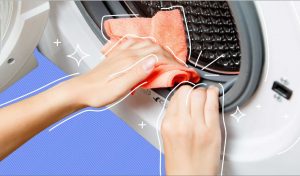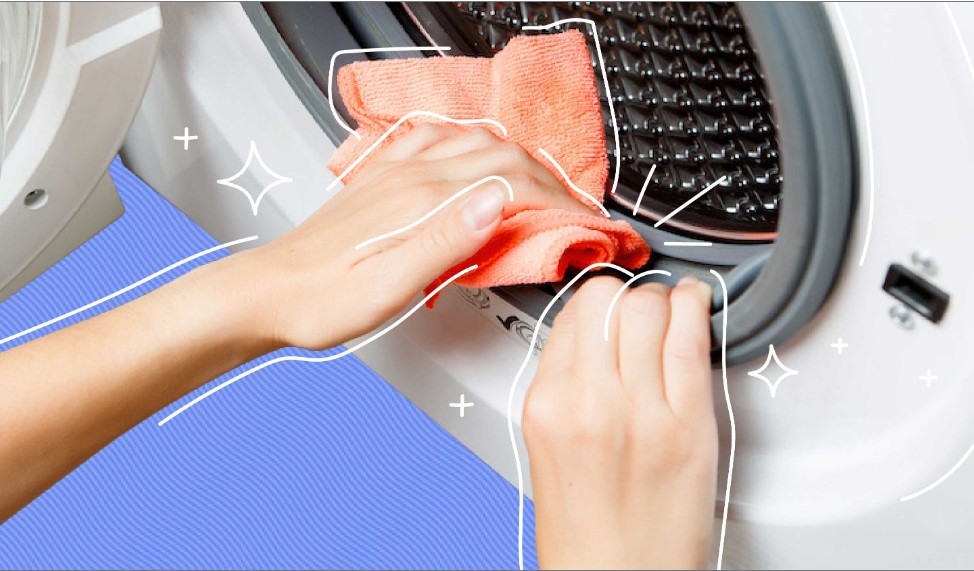The contents table is as follows:
When should you give your washing machine a cleaning?
Side-loading versus top-loading devices
What you will require
Eight simple ways to cleaning a top-loading washing machine
Six simple ways to cleaning a side-loading washing machine
When to apply bleach
And this is the information:
When should you give your washing machine a cleaning?
To keep your washing machine in good working order and to ensure that your clothes are as clean as possible, try cleaning it once a month. If you have hard water that can leave behind mineral deposits, live in a hot or humid area where mildew can easily grow, or frequently launder extra dirty garments like cloth diapers or outdoor work clothes, you should clean it more frequently (every two weeks).
Give the washing machine a quick clean as soon as you notice any detergent stains on your clothes or unpleasant odors emanating from it after doing a load of laundry.
Side-loading versus top-loading devices
The manner in which top-loading and side-loading washing machines open is the primary distinction between them. The water in a top-loading washer does not spill out when the door is opened since it opens from the top. If you were to open a side-loading washing door in the middle of a cycle, the water would pour out since it swings open like a standard door. Because of this, each type’s cleaning procedure varies slightly.
Where the detergent is placed in the two types washing machines is another distinction. If you pour detergent straight into the machine, most top loaders will have built-in fabric softener and detergent wells, or none at all. To clean the wells for top loaders, sprinkle some warm vinegar into them. Removable wells are a feature of most side loaders. Remove these and use warm vinegar to clean.
Additionally, a broad rubber seal on side-loading machines keeps water from escaping while the machine is in the washing cycle. Lint, soap, and hair are easily entangled or gathered in the seal. If your washer is side loading, give this region special care when cleaning.
What you will require
One-quart vinegar (white)
One cup of baking soda
soiled towel for an old toothbrush
vinegar-based cleaning agent
Warm white vinegar
Eight simple ways to cleaning a top-loading washing machine
- Open the top, select the hottest wash cycle, and let the water fill the machine all the way.
Pour one-quart vinegar right into the boiling water.
Shut the cover and give the vinegar a minute to stir.
Let the vinegar and water sit for an hour by opening the lid to stop the cycle.
Use a cleaning cloth and vinegar solution to wipe off the machine’s exterior while you wait. Use warm vinegar to thoroughly clean the detergent wells.
Shut the cover and allow the cycle to finish.
After cleaning is finished, repeat steps 1 through 6 using one cup of baking soda rather than vinegar.After using baking soda to finish the procedure, use a vinegar cleaning solution to clean the washer’s interior.
How to clean a side-loading washing machine in 6 easy steps
- Fill the detergent, bleach, and fabric softener wells with as much of the quart of vinegar as your machine can hold. Any leftover vinegar should be added straight to the washing machine’s interior.
On the longest and hottest setting, begin a cycle.
While you wait, use a cleaning cloth and vinegar solution to wipe the machine’s exterior, as well as the door and glass. Remove the detergent wells and use warm vinegar to clean them.
After the cleaning cycle is finished, repeat the process using one cup of baking soda rather than vinegar, putting the baking soda straight inside the machine.After using baking soda to finish the procedure, use a vinegar cleaning solution to clean the washer’s interior. To ensure that it dries completely and stop any mildew from growing, leave the door ajar.
Using vinegar and a cleaning cloth or an old toothbrush, clean the rubber gasket. In between any rubber folds, wipe. Use the bleach procedure below if the gasket exhibits signs of mold or mildew.


